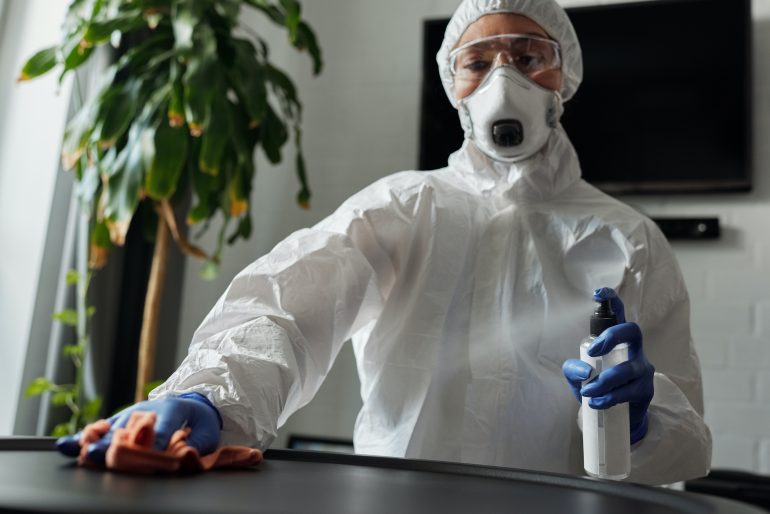Efforts to better understand how infectious and viral disease spreads on surfaces are continuing. The Cleaning Industry Research Institute (CIRI) has published a new white paper, “Contact Transmission of Infectious Disease Agents: The Science and Implications for Cleaning and Disinfection of Surfaces”, which aims to educate on how microbials behave on hard surfaces.
Authored by academic researchers on the Science Advisory Council of CIRI, the free resource provides a comprehensive, evidence-based overview of microbials’ ability to infect people after coming into contact with hard surfaces.
With data related to microbe survivability, common modes of transmission, the impact of cleaning and disinfection interventions, paired prevention strategies and cleaning and disinfection frequency recommendations, the paper offers key research supporting the role of cleaning and disinfection in mitigating the spread of viral transmission.
“From the beginning of the pandemic, CIRI’s Science Advisory Council has called for a layered approach to combat the spread of SARS-COV-2, the virus that causes COVID-19,” said John Downey, Executive Director of CIRI. “This white paper presents an overwhelming amount of research supporting the continued use of cleaning and disinfection interventions to mitigate the spread of infectious diseases, including SARS-COV-2. That said, it’s important to distinguish between health-based cleaning strategies and some of the broadcast disinfection efforts we’ve seen in response to the pandemic.”
Citing more than 30 published research works, the white paper offers the following key insights:
- Contaminated surfaces serve as reservoirs of a vast microbial community that builds over time as infectious aerosols settle onto surfaces, and the numbers of contaminated hand and finger touches continue to increase.
- Multiple studies have been published on pathogen transfer between hands and surfaces, and on microbial pathogen survival on the skin and on surfaces.
- Direct hand-to-hand transmission of cold viruses, with subsequent self-inoculation and resultant disease, has been demonstrated in human volunteers (e.g. Rhinovirus).
- Three key factors provide a summary understanding of the potential for infective agents to infect humans and cause disease: 1) infective dose, 2) virulence, and 3) the immune status of the individual.
- The cleaning process, through friction, physically removes microbes and their associated matrices in which they may be embedded, such as saliva and/or nasal secretions from the nose or mouth, as generated by coughing or sneezing.
- Research has demonstrated that a combination of hand hygiene practices (handwashing, use of hand sanitizer) and fomite cleaning/disinfection, maximizes the reduction of risk for pathogen contact transmission.
- The cleaning process is crucial, as it removes substances that may block or interfere with the antimicrobial action of a disinfectant used to kill or otherwise inactivate any remaining microbial residues.
“Recently, the CDC and others have deemphasized the importance of surface cleaning as it relates to COVID. To some extent this is a welcome correction, as it is based on the facts as we understand them: the primary route of infection is through inhalation,” added Downey. “That said, it should be kept in mind that environments are literally fluid, with air being the fluid. And research has shown that what is in the air will go to surfaces and what is on surfaces — especially viruses, which are incredibly small and light — will go to the air. The solution isn’t to clean the air and forget about surfaces, any more than it is to clean surfaces and forget about the air. The solution is a combination of both.”










